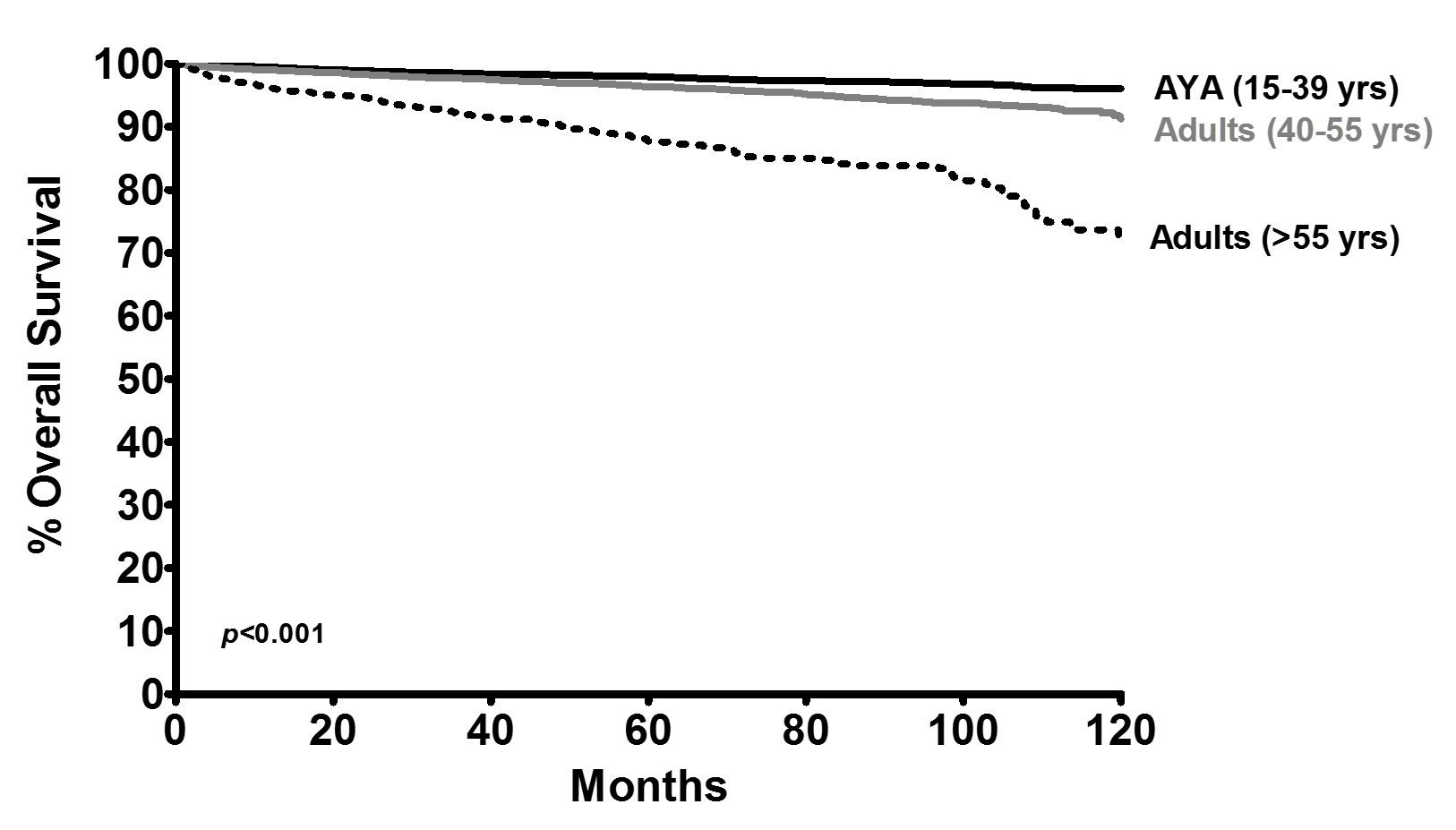Patterns of Care and Survival Outcomes for Adolescent and Young Adult (AYA) patients with Testicular Seminoma in the United States: A Study of the National Cancer Database
Arya Amini, MD, Paul Maroni, MD, Elizabth Kessler, MD, Carrye Cost, MD, Brian Greffe, MD, Timothy Garrington, MD, Arthur Liu, MD, PhD, Nicholas G. Cost, MD.
University of Colorado School of Medicine, Aurora, CO, USA.
Background: Testicular germ cell tumors (GCTs) are the most common solid tumor among adolescent and young adult (AYA) males. AYA patients with GCTs most typically have non-seminoma as compared to seminoma and accordingly, there is less reported on the AYA seminoma experience. The purpose of this study was to evaluate national trends in postoperative treatment and overall survival (OS) outcomes in testicular seminoma by age group, specifically comparing AYAs to older adults.
Methods: The National Cancer Data Base (NCDB) was queried for patients with testicular seminoma diagnosed between 2004-2012, who underwent orchiectomy followed by observation or adjuvant therapy (chemotherapy, radiation (RT), or both). Patients were grouped by age: AYA (15-39yr), adults between 40-55yr, and adults >55yr. Overall survival (OS) was presented using Kaplan-Meier curves and groups compared via a log-rank test. Univariate (UVA) and multivariate (MVA) analyses were performed using Cox proportional hazards regression models. Binary multiple logistic regression identified differences in variables by age category.
Results: In total 22,361 patients were evaluated; the majority were AYA patients (n=12,880), followed by adults 40-55yr (n=8,022), and > 55yr(n=1,459). Unadjusted 5-year OS was significant better for AYAs vs. adults 40-55 and > 55 years (98.0%, 96.4%, 87.7%; p<0.001), as was 10-year OS (96.1%, 91.8%, 71.3% respectively; p<0.001), see Figure. Under MVA, OS was significantly better for AYAs (reference) vs. adults 40-55yr (hazard ratio [HR], 1.80; 95% confidence interval [CI], 1.52-2.13; p<0.001) and > 55 years (HR, 4.26; 95% CI, 3.47-5.23; p<0.001). AYA patients were more commonly treated at centers with greater clinical volume - intermediate (OR, 1.14; p<0.001) or high volume (OR, 1.17; p<0.001). Additionally, AYA patients were less likely to present with metastatic disease - stage II (OR, 0.86; p=0.002) or stage III (OR, 0.72; p<0.001). Accordingly, AYA patients were less likely to undergo RPLND (OR, 0.81; p=0.001) and were less often managed with adjuvant therapy including chemotherapy (OR, 0.91; p=0.027), radiation therapy (OR, 0.93; p=0.025), or both (OR, 0.68; p=0.020).
Conclusion: AYA testicular seminoma patients present with earlier stage disease and in the clinical Stage I setting are more often are managed with observation following orchiectomy when compared to older adults in this population-based analysis. Among AYA patients, OS was modestly better when compared to adults 40-55 years and significantly better when compared to adults > 55 years. 
Back to 2016 Fall Congress
